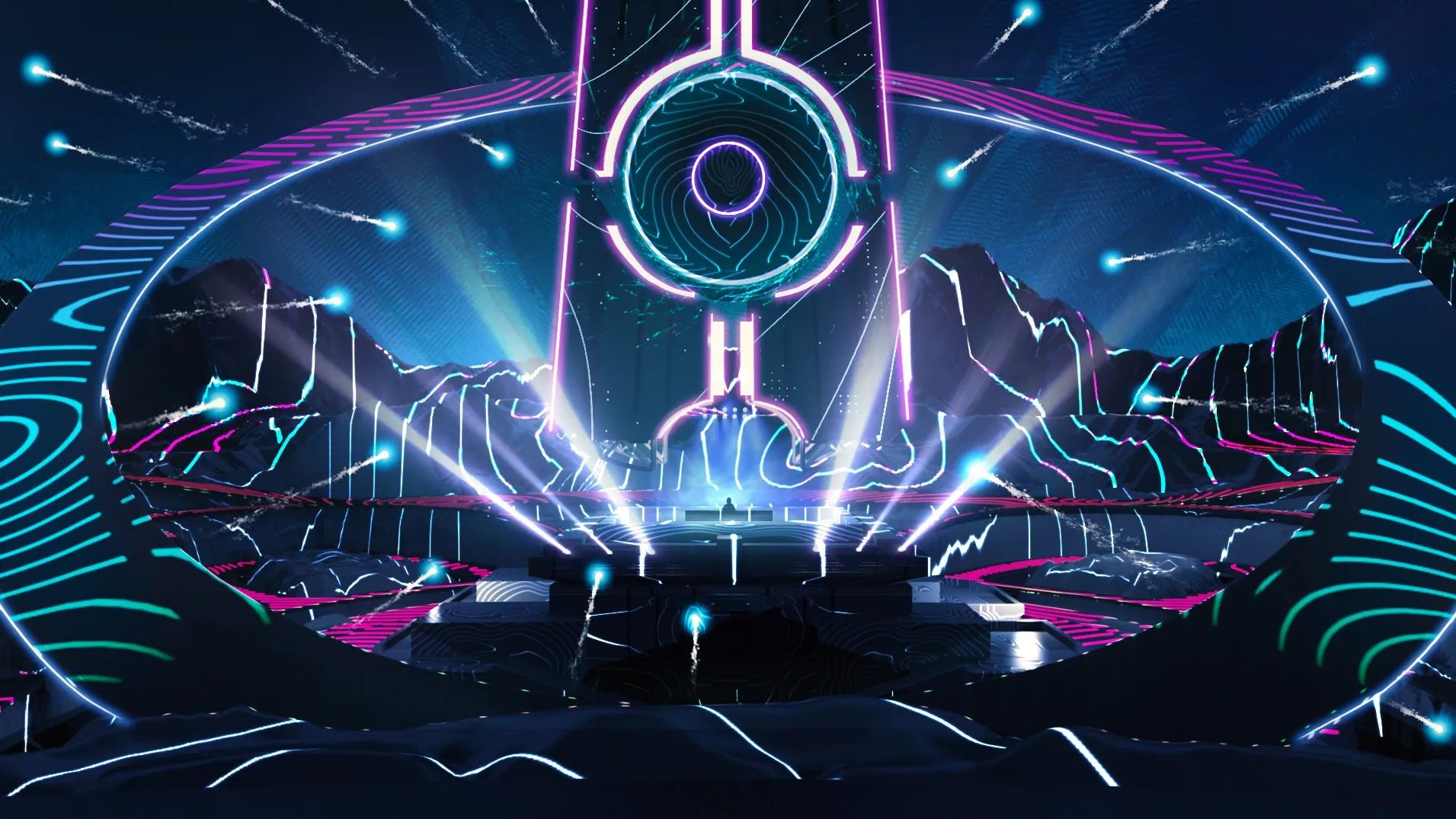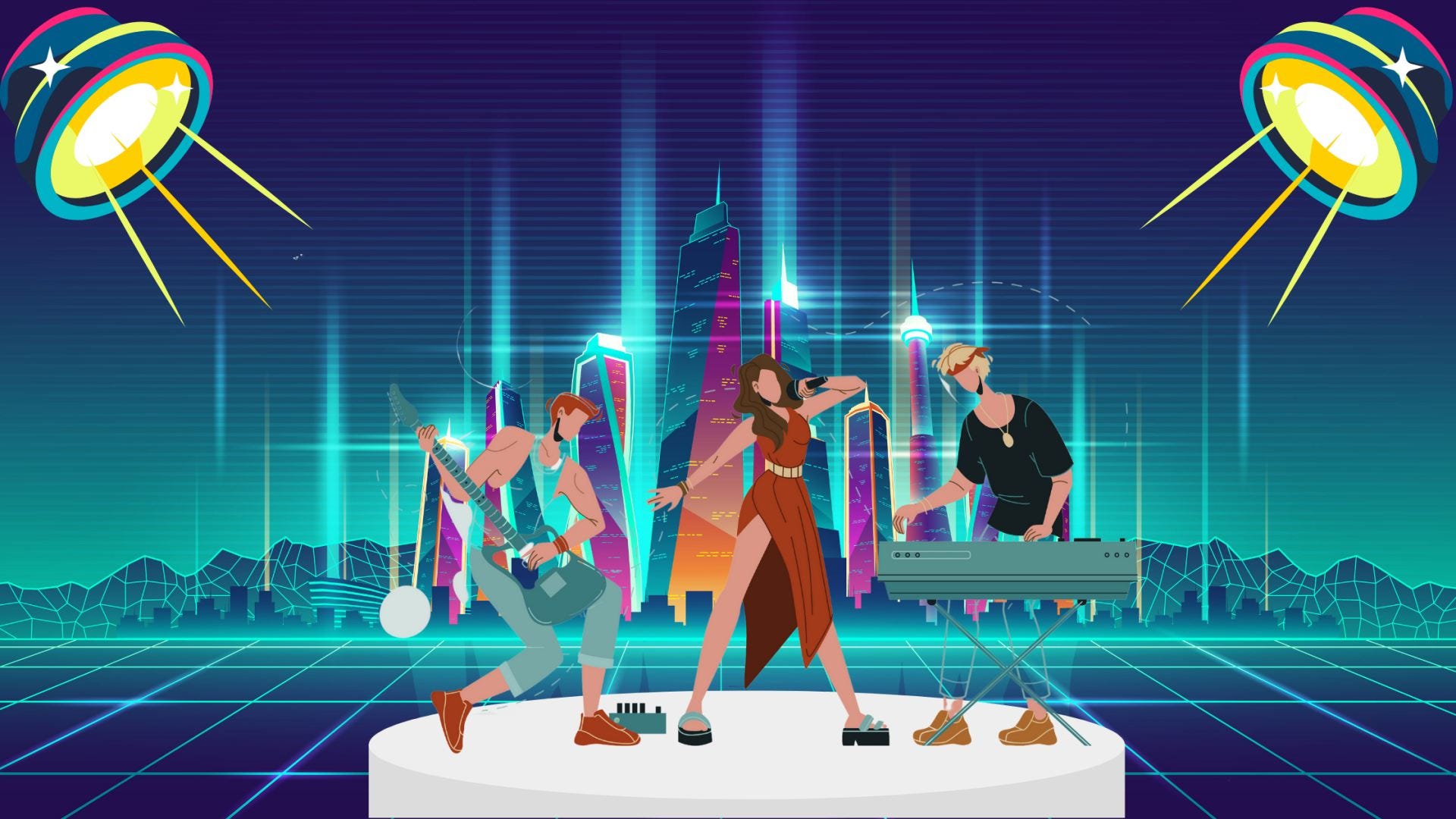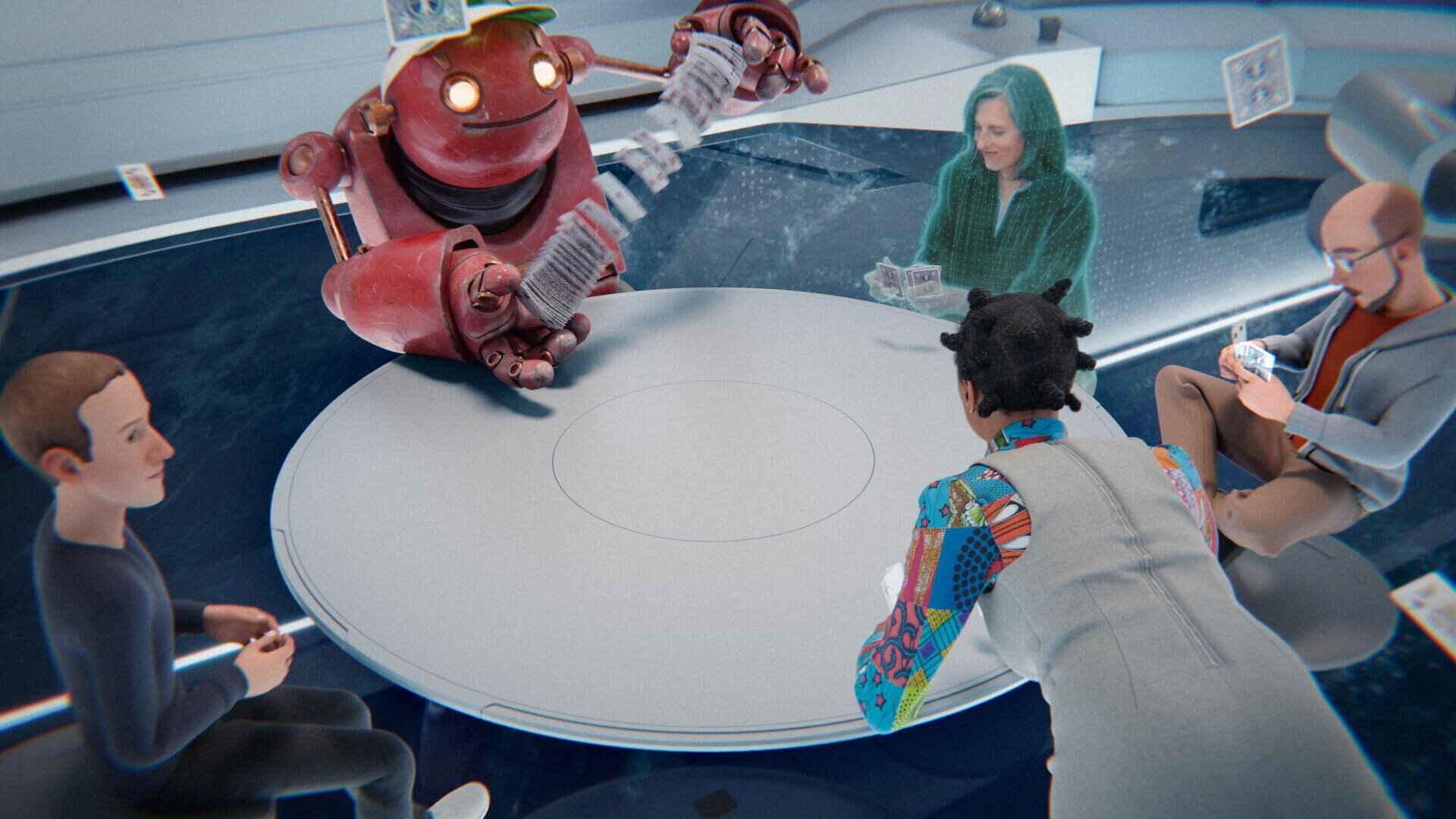Introduction
Welcome to the exciting concept of the Metaverse! In today’s digital age, where technology is constantly evolving, the Metaverse has emerged as a fascinating concept that is capturing the attention of both tech enthusiasts and the general public. It promises a virtual world where users can interact with each other and the environment in ways that were previously unimaginable.
The term “Metaverse” was first coined by Neal Stephenson in his science fiction novel “Snow Crash” back in 1992. While the concept has been around for several decades, recent advancements in technology have brought it closer to reality. With virtual reality (VR), augmented reality (AR), and blockchain technology becoming more sophisticated and accessible, the dream of a fully immersive and interconnected virtual universe is becoming more tangible.
Imagine a world where you can step into a digital realm, donning a VR headset, and instantly find yourself in a vibrant and interactive virtual space. You can explore exotic locations, meet people from across the globe, engage in thrilling adventures, or simply socialize with friends in a whole new way. The possibilities are endless!
The Metaverse aims to transcend the limitations of the physical world, offering an immersive and boundless digital experience. It blurs the line between reality and fantasy, enabling users to create and customize their digital identities, known as avatars, and navigate a vast array of virtual landscapes and experiences.
Whether you’re a gamer looking for more immersive gameplay, an artist seeking new ways to express your creativity, a businessperson exploring virtual markets, or simply someone curious about the future of technology, the Metaverse holds tremendous potential and promises an exciting frontier to explore.
In this article, we will delve deeper into the concept of the Metaverse, exploring its definition, historical roots, key features, and its intersection with virtual reality, augmented reality, and blockchain technology. We will also examine the role of gaming and social experiences within the Metaverse, as well as the challenges and concerns associated with its development.
Definition of Metaverse
The term “Metaverse” refers to a virtual universe or a collective virtual shared space where individuals can engage in a wide range of activities, interact with each other, and access various digital experiences. It is a conceptual extension of the internet, taking it beyond just web pages and connecting users in a more immersive and interactive manner.
The Metaverse is often described as a three-dimensional, multi-user virtual environment that provides a sense of presence and immersion. It is not limited to a single platform or technology but encompasses a network of interconnected virtual worlds, applications, and experiences that can be accessed from different devices.
One of the defining characteristics of the Metaverse is its persistent nature. Unlike traditional video games or virtual experiences, the Metaverse is designed to be a continuously evolving and interconnected digital realm. It is a place where users can engage in various activities, from socializing and gaming to virtual commerce and entertainment, all within a seamlessly connected environment.
In the Metaverse, users can create and customize their digital representations known as avatars, which serve as their virtual identities. These avatars can navigate through virtual landscapes, interact with objects, and communicate with other users in real-time. The ability to interact and collaborate with others is a fundamental aspect of the Metaverse, fostering a sense of community and shared experiences.
It is important to note that the Metaverse is not limited to a specific technology or platform. While virtual reality (VR) and augmented reality (AR) play significant roles in creating immersive experiences within the Metaverse, it also encompasses other technologies such as blockchain, artificial intelligence, and cloud computing. These technologies enable the seamless integration of virtual and real-world elements, enhancing the authenticity and interactivity of the Metaverse.
Overall, the Metaverse represents a new frontier in the digital landscape, offering users a rich and immersive virtual experience that goes beyond traditional online interactions. It is a concept that blurs the boundaries between the physical and digital worlds, creating a new realm of possibilities for entertainment, communication, and human interaction.
History of Metaverse
The concept of the Metaverse has its roots in science fiction and has been evolving for several decades. It has captured the imagination of writers, filmmakers, and futurists, inspiring them to explore the possibilities of a fully immersive digital world.
One of the earliest mentions of the Metaverse can be traced back to Neal Stephenson’s novel “Snow Crash,” published in 1992. In the book, Stephenson introduced the idea of a virtual universe where users could navigate through a three-dimensional world and interact with each other in real-time. This novel popularized the term “Metaverse” and laid the foundation for the concept as we know it today.
Throughout the 1990s and early 2000s, various virtual worlds and online platforms emerged, contributing to the development of the Metaverse. One of the notable examples is Second Life, launched in 2003. Second Life allowed users to create, explore, and socialize in a vast virtual environment. It gained widespread popularity and served as a precursor to the immersive experiences offered by the Metaverse.
Advancements in technology played a pivotal role in shaping the evolution of the Metaverse. The proliferation of high-speed internet, the development of powerful graphics processing units (GPUs), and the emergence of virtual reality (VR) and augmented reality (AR) technologies have propelled the realization of the Metaverse forward.
Today, companies such as Facebook (now Meta), Epic Games, and Microsoft are investing heavily in creating the infrastructure and technologies required to build the Metaverse. They envision a future where individuals can seamlessly transition between the physical and virtual worlds, traversing an interconnected landscape of virtual spaces and experiences.
Furthermore, the rise of blockchain technology has also contributed to the development of the Metaverse. Blockchain’s decentralized and transparent nature provides a foundation for secure ownership and interoperability of virtual assets within the Metaverse. This opens up possibilities for virtual economies, where users can buy, sell, and trade digital goods and services.
As the development of the Metaverse continues to gain momentum, there is an increasing recognition of its potential impact on various industries. It has the potential to revolutionize fields such as gaming, entertainment, education, healthcare, and commerce, offering new avenues for engagement, creativity, and social interaction.
Looking ahead, the history of the Metaverse is still being written, with advancements in technology and the creativity of developers shaping its trajectory. The dream of an all-encompassing digital universe is gradually becoming a reality, promising a future filled with endless possibilities and transformative experiences.
Key Features of Metaverse
The Metaverse is characterized by a set of key features that distinguish it from traditional online experiences. These features contribute to creating a seamless, immersive, and interconnected virtual universe. Let’s explore some of the key features of the Metaverse:
1. Immersive Virtual Environment: The Metaverse offers an immersive three-dimensional virtual environment that users can explore and interact with. This environment is designed to replicate the physical world or create entirely new and imaginative spaces where users can engage with objects, people, and experiences.
2. Interconnectivity: One of the defining features of the Metaverse is its interconnected nature. Users can seamlessly move between different virtual worlds and experiences, creating a sense of continuity and fluidity. This interconnectivity enables a wide range of activities, from socializing and gaming to virtual commerce and collaborative projects.
3. User-Generated Content: In the Metaverse, users have the ability to create and contribute to the digital environment. They can design virtual objects, build virtual spaces, and even develop their own virtual experiences. User-generated content allows for endless creativity and customization, making the Metaverse a dynamic and ever-evolving landscape.
4. Social Interaction: Social interaction is a cornerstone of the Metaverse. Users can communicate, collaborate, and socialize with others in real-time, fostering a sense of community and shared experiences. Whether it’s attending virtual events, joining multiplayer games, or simply hanging out with friends, the Metaverse offers new opportunities for social connections.
5. Virtual Economies: Virtual economies are an integral part of the Metaverse. They enable the buying, selling, and trading of digital assets and currencies within the virtual environment. Blockchain technology plays a significant role in establishing secure ownership and facilitating transactions in these virtual economies, allowing users to monetize their creations and participate in virtual commerce.
6. Cross-Platform Accessibility: The Metaverse is designed to be accessible across various devices and platforms. Users can access and engage with the virtual environment through virtual reality (VR) headsets, augmented reality (AR) glasses, computer screens, or even mobile devices. This cross-platform accessibility ensures that users can connect and explore the Metaverse regardless of their preferred technology.
7. Persistent and Expandable: The Metaverse is a persistent and expandable digital universe. It evolves and grows over time, with new virtual worlds, experiences, and features continually being added. This dynamic nature ensures that there is always something new to discover and engage with, offering an ongoing source of excitement and exploration.
These key features collectively define the essence of the Metaverse, creating an immersive and interconnected digital realm that opens up a world of possibilities for users. As technology continues to advance, we can expect these features to evolve and expand, pushing the boundaries of what the Metaverse can offer.
Virtual Reality and Metaverse
Virtual reality (VR) plays a pivotal role in the development and experience of the Metaverse. It provides users with a fully immersive and interactive virtual environment, allowing them to engage with the digital world in a more sensory-rich and realistic manner. Here, we explore the relationship between virtual reality and the Metaverse:
1. Enhanced Immersion: Virtual reality technology creates a sense of presence, transporting users into a digital world that feels remarkably real. Through head-mounted displays, motion tracking, and haptic feedback, VR enables users to explore and interact with the Metaverse as if they were physically present in the virtual environment. This heightened immersion enhances the overall experience and fosters a deeper connection with the digital realm.
2. Spatial Interaction: In the Metaverse, spatial interaction is a fundamental aspect of navigating and engaging with the virtual environment. Virtual reality allows users to move, gesture, and interact with objects in three-dimensional space, adding a level of physicality and naturalness to the experience. Users can physically reach out, grab, and manipulate objects, contributing to a more intuitive and engaging interaction within the Metaverse.
3. Avatar Embodiment: Virtual reality enables users to embody avatars within the Metaverse. Through VR, users can see their virtual bodies and hands, mirroring their real-world movements and gestures. This embodiment enhances the sense of self and presence within the virtual environment, strengthening the feeling of being part of the digital world and facilitating social interactions with other avatars.
4. Multiplayer Experiences: Virtual reality enhances multiplayer experiences within the Metaverse. Users can meet, interact, and collaborate with other individuals in virtual spaces, fostering a sense of social presence and shared experiences. Through VR, users can communicate using voice chat, avatars can make eye contact, and gestures can be shared, creating a more immersive and realistic social environment.
5. Seamless VR Metaverse Integration: Virtual reality seamlessly integrates with the Metaverse, enabling users to access and explore virtual worlds and experiences in a more immersive manner. VR headsets serve as windows to the digital universe, providing users with a front-row seat to the vast array of activities and interactions within the Metaverse. As VR technology continues to evolve, we can anticipate even more seamless integration, enhancing the realism and capabilities of the Metaverse.
Virtual reality brings the Metaverse to life, offering users an unprecedented level of immersion, interaction, and presence within the digital realm. As VR technology advances and becomes more accessible, it will continue to play a vital role in shaping the future of the Metaverse, making it an even more engaging and transformative experience for users.
Augmented Reality and Metaverse
Augmented reality (AR) is another technology that intersects with the Metaverse, providing unique and exciting opportunities for users to engage with the digital world. Unlike virtual reality, which immerses users in a completely virtual environment, augmented reality overlays digital content onto the real world. Let’s explore the relationship between augmented reality and the Metaverse:
1. Blending Real and Virtual: Augmented reality seamlessly blends digital content with the real world, creating a mixed reality experience within the Metaverse. Users can see and interact with virtual objects, characters, and information overlaid onto their physical surroundings. This blending of real and virtual elements enhances the sense of immersion and enables new forms of interaction and engagement within the Metaverse.
2. Spatial Contextualization: Augmented reality provides spatial contextualization within the Metaverse. AR technology uses sensors and cameras to understand the user’s environment and accurately place virtual content in relation to real-world objects. This spatial understanding allows for more precise interactions and placements of virtual objects, enhancing the realism and practicality of augmented reality experiences within the Metaverse.
3. Real-time Information and Data: Augmented reality within the Metaverse can provide users with real-time information and data overlays. Users can access and visualize useful information such as directions, reviews, and ratings, enhancing their understanding and interaction with the virtual environment. This real-time information layer brings additional value and utility to the Metaverse, making it a powerful tool for both leisure and practical applications.
4. Shared Experiences: Augmented reality in the Metaverse enables shared experiences among users. Multiple users can interact with the same augmented content simultaneously, enhancing collaboration, communication, and socialization. This shared AR experience fosters a sense of community and connectivity within the Metaverse, allowing users to interact and engage with others in real-time, regardless of their physical location.
5. Mobile AR Devices: One of the key advantages of augmented reality is its accessibility through mobile devices such as smartphones and tablets. Mobile AR apps can serve as gateways to the Metaverse, allowing users to access and experience the virtual world wherever they are. The convenience and widespread adoption of mobile AR devices make the Metaverse more accessible to a broader audience, democratizing access to its possibilities.
Augmented reality enriches the Metaverse by bringing digital content into the real world and facilitating new forms of interaction and engagement. As AR technology continues to advance and become more prevalent, we can expect augmented reality to play an increasingly significant role in the development and evolution of the Metaverse, bridging the gap between the physical and digital realms.
Blockchain and Metaverse
Blockchain technology has emerged as a key component in the development and success of the Metaverse. It provides a decentralized and transparent infrastructure that supports secure ownership, interoperability, and virtual economies. Let’s explore the relationship between blockchain and the Metaverse:
1. Secure Ownership and Digital Assets: Blockchain enables secure ownership and verification of digital assets within the Metaverse. Through the use of non-fungible tokens (NFTs) and smart contracts, users can prove ownership and authenticity of virtual assets, including virtual real estate, digital artworks, and virtual items. Blockchain’s decentralized nature eliminates the need for intermediaries, ensuring trust and security in transactions within the Metaverse.
2. Interoperability and Portability: Blockchain facilitates interoperability among different virtual worlds, platforms, and applications within the Metaverse. Virtual assets and currencies can be tokenized on the blockchain, allowing seamless transfer and exchange between different Metaverse environments. This interoperability promotes a more connected and dynamic Metaverse, where users can carry their assets and experiences across various platforms.
3. Virtual Economies and Tokenization: Blockchain technology enables the creation of virtual economies within the Metaverse. Virtual currencies and assets can be tokenized on the blockchain, giving them inherent value and enabling users to buy, sell, and trade digital goods and services in a secure and transparent manner. This tokenization of virtual assets creates a thriving ecosystem of virtual commerce and economic activity within the Metaverse.
4. Decentralization and Governance: Blockchain allows for decentralized governance models within the Metaverse. Decisions related to the development, rules, and policies of virtual worlds can be made through decentralized governance mechanisms enabled by blockchain technology. This promotes community participation and ownership within the Metaverse, giving users a voice in shaping the virtual environments they inhabit.
5. Authenticity and Scarcity: Blockchain’s immutability and transparency contribute to the authenticity and scarcity of virtual assets within the Metaverse. Users can verify the origin, ownership history, and scarcity of digital assets through blockchain records, creating a sense of value and uniqueness. This authenticity and scarcity drive the market for virtual assets and foster a sense of value and investment within the Metaverse.
Overall, blockchain technology plays a crucial role in establishing trust, security, and interoperability within the Metaverse. It enables secure ownership, facilitates virtual economies, and establishes decentralized governance models. As the Metaverse continues to evolve, blockchain will likely play an even more significant role in shaping its infrastructure and ensuring a seamless and transparent virtual environment for users.
Gaming and Metaverse
Gaming is a driving force behind the development and popularity of the Metaverse. With its immersive and interactive nature, gaming serves as a gateway to the Metaverse, providing engaging and entertaining experiences for users. Let’s explore the intersection between gaming and the Metaverse:
1. Immersive Gameplay: Gaming within the Metaverse offers a level of immersion that goes beyond traditional gaming experiences. Users can inhabit virtual worlds, interact with lifelike avatars, and explore vast landscapes, creating a truly immersive and interactive gaming environment. The Metaverse amplifies the sense of presence and engagement, making gaming experiences more captivating and realistic.
2. Multiplayer and Social Gaming: The Metaverse enriches gaming experiences by promoting multiplayer and social interactions. Users can team up with friends or connect with players from across the globe, collaborating or competing in virtual environments. The social aspect of gaming within the Metaverse fosters connections, facilitates shared experiences, and enhances the sense of community among players.
3. Virtual Commerce and In-game Economies: Gaming within the Metaverse often involves the creation of virtual economies and in-game marketplaces. Players can buy, sell, and trade virtual assets, items, or currencies through secure and transparent blockchain systems. The fusion of gaming and virtual commerce enhances the economic aspect of gaming, allowing players to monetize their skills, collect rare items, and engage in virtual entrepreneurship.
4. Cross-platform Compatibility: Gaming within the Metaverse offers cross-platform compatibility, allowing players to access and continue their gaming experiences seamlessly across different devices and platforms. Whether using a PC, console, or mobile device, users can dive into the Metaverse and pick up where they left off, enhancing the convenience and accessibility of gaming within the virtual universe.
5. Interactive Storytelling and Narrative: The Metaverse provides a platform for interactive storytelling and narrative-driven gaming experiences. Players can become true participants in captivating narratives, making decisions that shape the course of the story within the virtual world. This interactive storytelling element empowers players to immerse themselves in rich narratives and create personalized gaming experiences within the Metaverse.
Gaming serves as a catalyst for the development and growth of the Metaverse, pushing the boundaries of immersion, socialization, and interactive experiences. As technology continues to advance, gaming within the Metaverse will become even more sophisticated, providing players with unprecedented levels of engagement and connection in the virtual universe.
Social Experiences in Metaverse
The Metaverse offers a unique and transformative social landscape, redefining how people connect, interact, and socialize in the digital realm. With its immersive environments, shared experiences, and virtual communities, the Metaverse opens up a new dimension of social interactions. Let’s explore the social experiences within the Metaverse:
1. Virtual Gatherings and Events: The Metaverse allows users to attend virtual gatherings and events, transcending physical barriers. From conferences and concerts to art exhibitions and social meetups, users can come together in virtual spaces to share experiences, engage in conversations, and connect with like-minded individuals from around the world. These virtual gatherings offer a new level of accessibility and inclusivity, overcoming limitations of time, distance, and physical limitations.
2. Avatar-based Communication: Avatars serve as digital representations of users within the Metaverse, enabling non-verbal communication and self-expression. Users can customize their avatars to reflect their personalities and engage in avatar-based interactions, such as gestures, expressions, and movements. This avatar-based communication fosters a sense of presence and social connection, even in virtual environments.
3. Collaborative Spaces: The Metaverse provides collaborative spaces where users can work together, brainstorm ideas, and engage in collaborative projects. Whether it’s virtual offices, co-working spaces, or design studios, these shared virtual environments enhance collaboration across geographical boundaries. Users can collaborate in real-time, share ideas, and iterate on projects, fostering a sense of teamwork and shared accomplishment.
4. Social Gaming: Gaming within the Metaverse extends beyond individual gameplay experiences. It brings people together in multiplayer games, encouraging social interactions, teamwork, and friendly competition. Gamers can form guilds, participate in virtual tournaments, and build friendships within the gaming communities of the Metaverse. Social gaming experiences within the Metaverse blur the lines between gaming and socializing, creating a vibrant and interconnected social landscape.
5. Virtual Commerce and Marketplace: The Metaverse offers virtual marketplaces where users can engage in virtual commerce, selling and buying digital assets, art, fashion, and more. Users can explore virtual shops, showcase their creations, and engage in economic exchanges within the secure and transparent framework of blockchain technology. These virtual marketplaces provide opportunities for social interaction, allowing users to discover and support each other’s creations within the virtual economy of the Metaverse.
Through these social experiences, the Metaverse fosters connection, collaboration, and creativity in unprecedented ways. It breaks the boundaries of traditional social platforms, allowing individuals to engage in immersive and meaningful social interactions within a virtual environment. With its potential to connect people across the globe and facilitate shared experiences, the Metaverse is poised to revolutionize the way we socialize and build communities in the digital age.
Challenges and Concerns of Metaverse
While the Metaverse holds great promise for transforming virtual experiences and connecting people in new ways, it also poses a unique set of challenges and concerns that must be addressed for its successful development. Let’s explore some of the key challenges and concerns surrounding the Metaverse:
1. Privacy and Data Security: The Metaverse collects vast amounts of user data, including personal information and virtual activities. Privacy concerns arise regarding how this data is collected, stored, and used. Safeguarding user privacy and ensuring robust data security measures are in place are paramount to building trust and protecting user information within the virtual environment.
2. Accessibility and Inclusivity: While the Metaverse offers new possibilities, it is crucial to ensure that it is accessible and inclusive to all. Access barriers, such as the cost of VR/AR devices and high-speed internet, can limit the participation of certain individuals or communities. Additionally, efforts must be made to accommodate individuals with disabilities and ensure that the Metaverse is inclusive and accessible to everyone.
3. Online Harassment and Toxicity: Creating a safe and welcoming virtual space within the Metaverse is essential. Online harassment, bullying, and toxic behavior can infiltrate virtual environments and negatively impact the experiences of users. Implementing robust moderation systems, community guidelines, and tools to report and address such behavior are crucial to foster a positive and inclusive virtual community within the Metaverse.
4. Digital Divide and Inequality: The Metaverse has the potential to amplify existing inequalities. The digital divide, where some individuals have limited access to technology and connectivity, can further marginalize disadvantaged populations if not addressed. Efforts should be made to bridge the digital divide and ensure that everyone has an equal opportunity to participate and benefit from the possibilities offered by the Metaverse.
5. Ethical Use of AI and Virtual Influencers: As AI and virtual influencers become more prevalent within the Metaverse, ethical considerations arise. Ensuring responsible use of AI, transparency in the creation of virtual influencers, and preventing the spread of misinformation are crucial to maintain trust and ethical standards within the virtual space.
6. Digital Addiction: The immersive nature of the Metaverse can potentially contribute to digital addiction and excessive screen time. Balancing virtual experiences with real-world interactions, promoting digital wellness, and creating awareness about responsible usage are important factors to mitigate the risk of excessive reliance on the virtual environment.
Addressing these challenges and concerns requires collective efforts from technology developers, policymakers, and the user community. Striking a balance between innovation and responsibility is crucial to ensure that the Metaverse evolves into a safe, ethical, and inclusive digital realm that benefits individuals and society as a whole.
Conclusion
The Metaverse represents an exciting frontier in the digital landscape, offering a vast and interconnected virtual universe that transcends the limitations of the physical world. It brings together technologies such as virtual reality, augmented reality, blockchain, and social interactions to create immersive and transformative experiences for users.
With its key features, including immersive environments, social interactions, and virtual economies, the Metaverse holds great potential for various industries. Gaming experiences within the Metaverse are pushing the boundaries of immersion and socialization, while virtual commerce is revolutionizing the way we trade and exchange digital assets. Collaborative spaces, augmented by blockchain technology, allow users to work together regardless of geographical boundaries.
However, the development of the Metaverse also presents challenges and concerns that need to be addressed. Privacy, data security, accessibility, and inclusivity should be prioritized to ensure a safe and equitable virtual environment. Efforts must be made to combat online harassment and toxicity, bridge the digital divide, and foster ethical use of AI and virtual influencers.
As technology continues to advance and society becomes more interconnected, the Metaverse will play an increasingly significant role in our digital lives. It is crucial that the development of the Metaverse is guided by principles of responsibility, inclusivity, and transparency. Collaboration between stakeholders, including developers, policymakers, and users, is essential to shape the future of the Metaverse in a way that benefits individuals and society as a whole.
The Metaverse presents a world of possibilities, where creativity, collaboration, and social interactions converge in a digital realm. As we navigate this exciting journey, it is up to us to build an inclusive, secure, and ethically conscious Metaverse that enhances our lives, expands our horizons, and brings people together in meaningful and immersive ways.

























